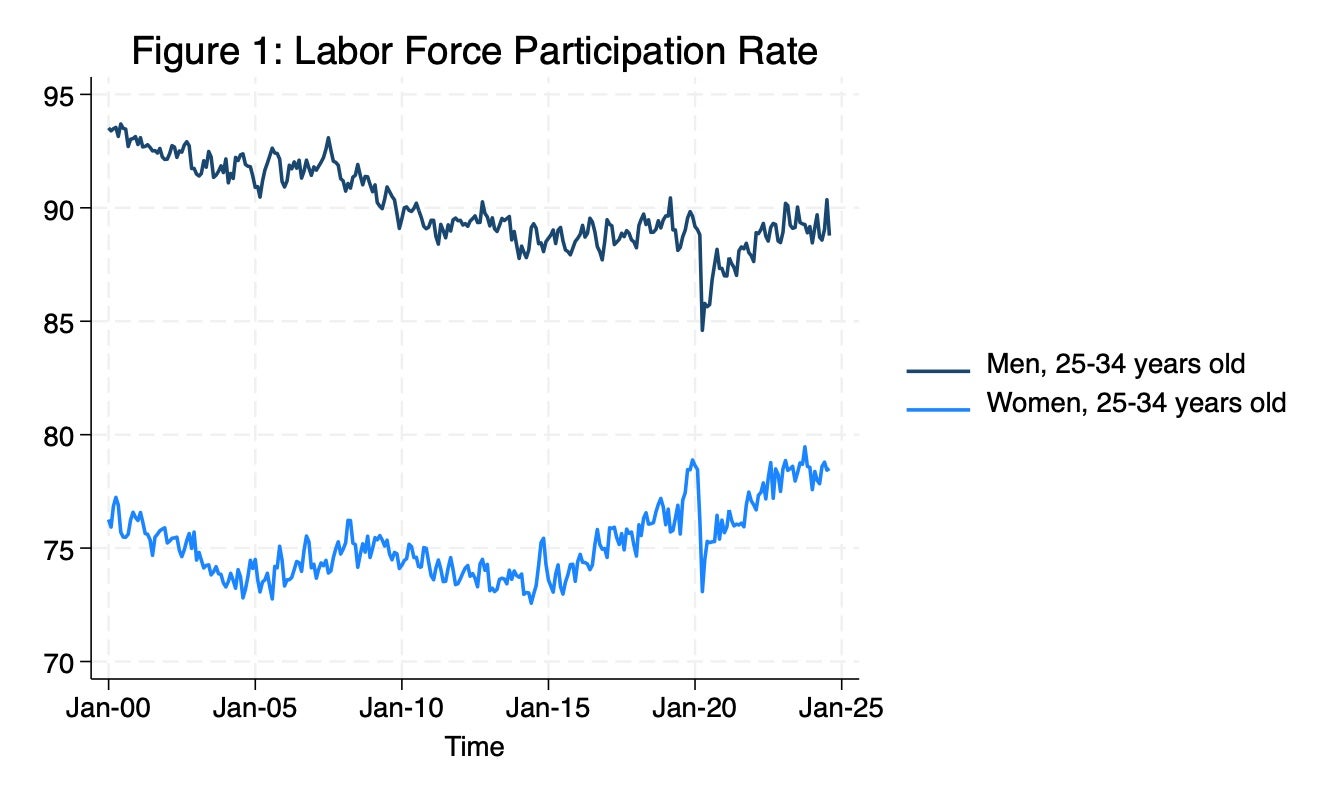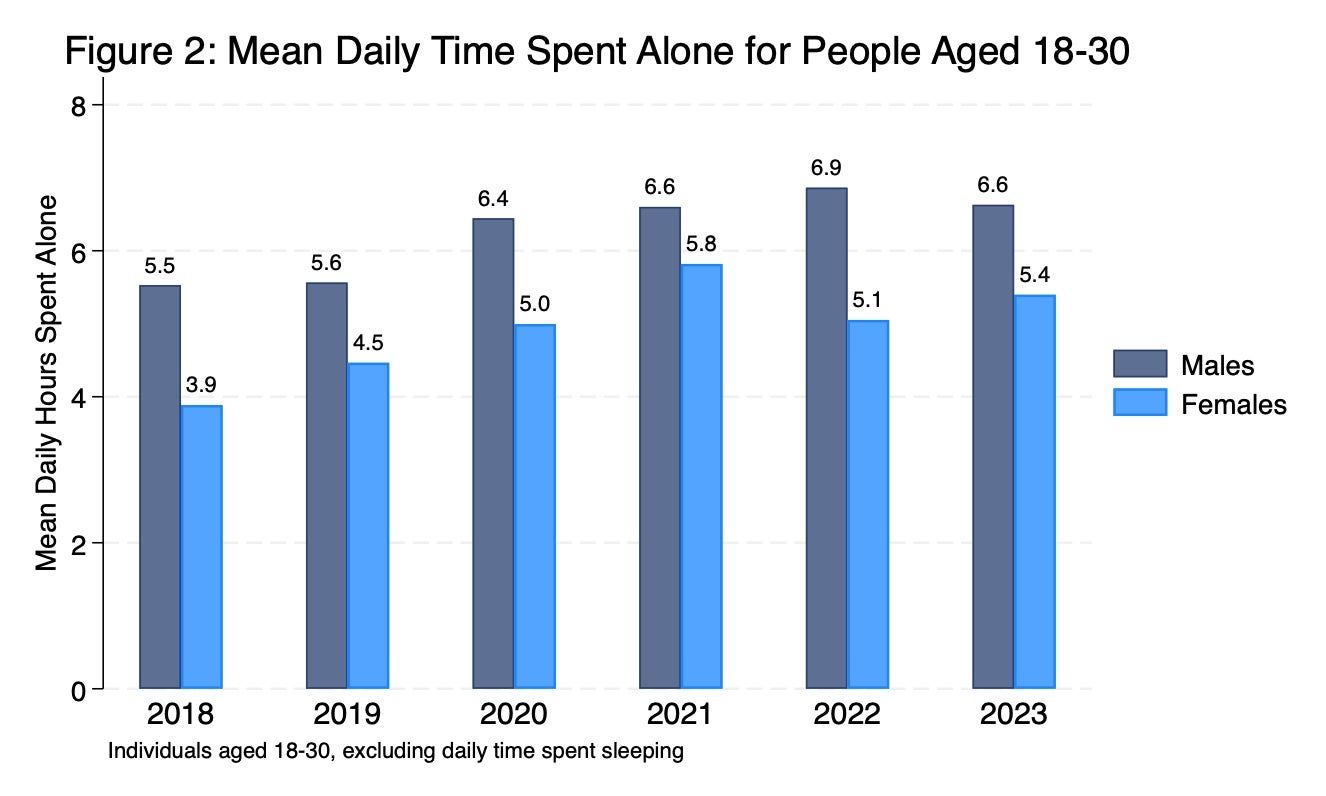
The Widening Economic and Social Gaps Between Young Men and Women

Recent social and economic data has revealed a troubling trend: young men in the US are increasingly falling behind their female peers, a long-widening gap that has accelerated in the wake of COVID-19. Many young men have struggled to navigate the disruptions associated with the pandemic, resulting in stagnating labor force participation rates, declining college enrollment, and increased social isolation.
This phenomenon is part of a longer trend of young men’s declining labor force participation. As shown in Figure 1, the average share of men 25-34 years old employed or looking for work has dropped from 92.4 percent twenty years ago, in August 2004, to 88.8 percent in August 2024. If labor force participation among young men today matched its August 2004 rate, over 700,000 more men would be in the workforce. On the other hand, over that same time, women’s labor force participation has risen from 72.8% to 78.5%

The decrease in labor force attachment comes at the same time as a significant drop in college enrollment after the pandemic, a trend highlighted in a previous AESG In Brief. Among men who had just graduated high school, just 55% enrolled in college in 2021, down from 62% in 2019, while these rates remained at 70% across this period for women. The most recent data indicates that men’s college enrollment rates have not yet recovered from their post-pandemic drop.
As young men are less likely to join the workforce or enroll in school, they are lives of increased isolation. As shown in Figure 2, men spend an average of 6.6 non-sleeping hours alone each day, compared to 5.4 hours for women. This represents an increase of over one hour spent alone daily compared to pre-pandemic figures. This increased isolation contributes to weakened labor market prospects through a narrowing of social networks.

The declines in young men’s academic progress and social connectedness experienced during the pandemic could spell further worsening in labor market outcomes. In their 2019 AESG paper A Policymakers Guide to Labor Force Participation, Keith Hennessey and Bruce Reed highlight that men with lower levels of education have experienced the largest declines in labor market prospects from 1965-2019, as technological disruptions and competition from low-wage overseas workers reduced economic opportunities for non-college educated men. Over that time, labor force participation among men with a high school degree but no college experience fell by 14 percentage points, compared to a 4 percentage point drop among men with a bachelor’s degree.
Helping young men today overcome the acute, pandemic-related disruptions they experienced just as they entered adulthood will take significant and widespread investments. Such efforts include ensuring those who want to enter college after pandemic-related disruptions are able to do so, restoring pathways to economic security outside of the college pipeline, and equipping young men with the social and emotional support to navigate this period in their lives – but these investments will be crucial to building a productive, economically secure next generation.